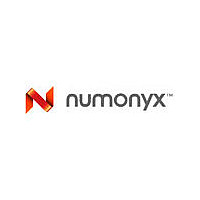N25Q128A13BSF40G NUMONYX, N25Q128A13BSF40G Datasheet - Page 28

N25Q128A13BSF40G
Manufacturer Part Number
N25Q128A13BSF40G
Description
SERIAL NOR
Manufacturer
NUMONYX
Datasheet
1.N25Q128A13BSF40G.pdf
(180 pages)
Available stocks
Company
Part Number
Manufacturer
Quantity
Price
Company:
Part Number:
N25Q128A13BSF40G
Manufacturer:
MICRON
Quantity:
15 000
Company:
Part Number:
N25Q128A13BSF40G
Manufacturer:
Numonyx
Quantity:
18 000
5.2.4
5.2.5
5.2.6
5.2.7
5.2.8
28/180
The DIO-SPI protocol is similar to the Extended SPI protocol i.e., to program one data byte
two instructions are required:
This is followed by the internal Program cycle (of duration tPP).
To spread this overhead, the Dual Command Page Program (DCPP) instruction allows up to
256 bytes to be programmed at a time (changing bits from 1 to 0), provided that they are
consecutive addresses on the same page of memory.
For optimized timings, it is recommended to use the DCPP instruction to program all
consecutive targeted bytes in a single sequence versus using several DCPP sequences
with each containing only a few bytes. See
Subsector Erase, Sector Erase and Bulk Erase
Similar to the Extended SPI protocol, in the DIO-SPI protocol to erase the memory bytes to
all 1s (FFh) the Subsector Erase (SSE), the Sector Erase (SE) and the Bulk Erase (BE)
instructions are available. These instructions start an internal Erase cycle (of duration tSSE,
tSE or tBE).
The Erase instruction must be preceded by a Write Enable (WREN) instruction.
Subsector Erase is only available on the 8 Bottom (Top) boot sectors, and is not available in
uniform architecture parts
Polling during a Write, Program or Erase cycle
Similar to the Extended SPI protocol, in the DIO-SPI protocol it is possible to monitor if the
internal write, program or erase operation is completed, by polling the dedicated register bits
by using the Read Status Register (RDSR) or Read Flag Status Register (RFSR)
instructions, the only obvious difference is that instruction codes, addresses and output data
are transmitted across two data lines.
Read and Modify registers
Similar to the Extended SPI protocol, the only obvious difference is that instruction codes,
addresses and output data are transmitted across two data lines
Active Power and Standby Power modes
Similar to the Extended SPI protocol, when Chip Select (S) is Low, the device is selected,
and in the Active Power mode. When Chip Select (S) is High, the device is deselected, but
could remain in the Active Power mode until all internal cycles have completed (Program,
Erase, Write Cycles). The device then goes in to the Standby Power mode. The device
consumption drops to ICC1.
HOLD (or Reset) condition
The HOLD (or Reset i.e. for parts having the reset functionality instead of hold pin) signal
has exactly the same behavior in DIO-SPI protocol as do in Extended SPI protocol, so
please refer to section 5.1.10, Hold (or Reset) condition” in the Extend SPI protocol section
for further details.
Write Enable (WREN), which is one byte, and a
Dual Command Page Program (DCPP) sequence, which consists of four bytes plus
data.
Table 32.: AC
Characteristics.












